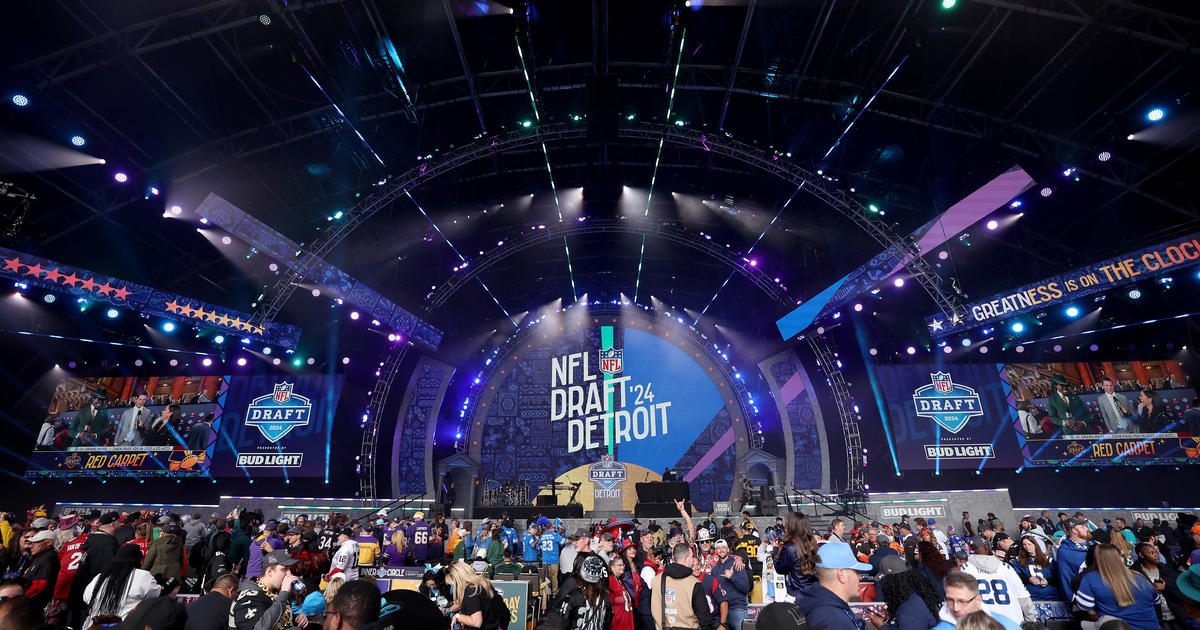Tech Tour Day Six: Grand Tech At Grand Valley

A lot of colleges and universities in Michigan are growing, but I doubt many are growing faster than Grand Valley State University.
Established 50 years ago in rural Allendale, the school has grown into a huge regional institution of 25,000 students. That farm field in Allendale has become a carefully manicured forest with honest-to-goodness ivy-covered college buildings. And Grand Valley has also gone urban, with a large and growing campus in on the west bank of the Grand River in downtown Grand Rapids.
There's also a growing body of research in several science and engineering disciplines, and a West Michigan-style commitment to fostering entrepreneurship and helping businesses that have a fierce independent streak.
My first stop on this gray, stormy morning was with Charles R. Standridge, assistant dean of Grand Valley's Padnos College of Engineering and Computing and director of the School of Engineering, which has about 1,200 students.
The engineering part of the college and some computer programs, particularly for graduate students, are housed in 82,000 square feet at the downtown campus. Included are the $7 million Keller laboratories, opened in fall 2000 and financed entirely with private donations, and the $17 million Kennedy Hall, opened in 2007 and financed with $12 million from the state and $5 million from contributors.
Padnos offers mechanical and electrical engineering, with a rare specialized program in product design and manufacturing engineering, a program in computer engineering, and minors in biomedical engineering, engineering science and computer engineering.
"There are less than a dozen programs in product design like ours in the country, where they take a product from idea to design to build," Standridge said.
Most recently, the college has received federal stimulus grants to establish classes leading to a master's degree in biomedical engineering and courses in nanotechnology. There are also new elective courses in alternative energy for mechanical engineering majors.
Standridge said Grand Valley requires co-op employment for all engineering graduates, meaning every student gets about a year of work experience before they graduate, and also requires a capstone senior project in partnership with local industry.
Recent projects include designing an RFID hospital supply cart that automatically keeps track of its inventory.
The school also has funding from the federal Department of Transportation to work with the University of Detroit Mercy on traffic data analysis and rerouting traffic around incidents, and funding for offshore wind analysis through the Michigan Alternative and Renewable Energy Center in partnership with the University of Michigan Phoenix Energy Institute, the federal Department of Energy, and the state Department of Energy, Labor and Economic Growth.
Kennedy Hall also includes a clean room for nanotech research and fabrication, and will soon include a biomedical engineering lab. Standridge said buses run back and forth down Lake Michigan Drive between the two major campuses, which are about 20 minutes apart, every 10 minutes, allowing students easy access to offices and classrooms on either campus. There's also a special wing of the building containing engineering laboratories just for freshmen.
*****************************************
My next stop was across the street in the downtown campus' DeVos Center, and the office of Linda Chamberlain, executive director of GVSU's Center for Entrepreneurship and Innovation. Chamberlain is also the leader of Grand Valley's young but growing tech transfer office.
Chamberlain said Grand Valley does work that's funded by the National
Institutes of Health and the National Science Foundation, and that the school produces 10 to 20 invention disclosures from faculty and students a year.
Recent examples include Pedal Pro, a device for competitive bicyclists that accurately measures the torque of each leg, the discovery of a new antimicrobial chemical family funded by a $115,000 Michigan Initiative for Innovation and Entrepreneurship, and a new invention for medical imaging invented by Chamberlain herself.
The Center for Entrepreneurship and Innovation, meanwhile, both prepares students for entrepreneurship as a career option and does whatever it can to foster the formation of businesses in West Michigan.
Chamberlain predicted good things ahead for entrepreneurship in the region, funded in part by the $10 million Michigan Accelerator Fund 1, made possible through a $6 million award from Michigan's 21st Century Jobs Fund, funded through federal tobacco settlement money.
Chamberlain said would-be entrepreneurs in the Grand Rapids area should check out http://entreprnr.net, a Web site that ties together all of Grand Valley's entrepreneurial resources, along with tips, contacts and reading material.
********************************************
Then I motored up Michigan Street with my host, Grand Valley communications specialist Leah J. Zuber, to the West Michigan Science and Technology Initiative, a life sciences incubator housed at Grand Valley's Cook-DeVos Center for Health Sciences.
Michigan Street has seen more than $1 billion of health care investment in recent years, from Michigan State University's new medical school to an expansion of the Van Andel Institute to a new children's hospital to a new cancer treatment center.
The Initiative's original eight-year-old 20,000-square-foot incubator is full, and an auxiliary 6,000-square-foot incubator at Monroe and Leonard downtown is filling.
Both are led by Rich Cook, venture center director, a veteran Grand Rapids-area CEO who formerly led X-Rite Inc. and Cascade Engineering. Before that, Cook spent 23 years at Donnelly as an executive and intrapreneur.
So far, the incubator has served about 400 clients, brought in $9 million in grants and added 55 jobs.
Its mission is to help diversify the local economy, particularly in the area of the life sciences, using technology. It offers services to entrepreneurs -- commercialization, connections and collaborations. It's also established the West Michigan Medical Device Consortium of 30 medical device companies from Kalamazoo to Big Rapids. It also offers a standalone company called Clinxus that offers services in human drug trials.
Running the incubator day to day is operations manager Bonnie Dawdy, an 18-year veteran of GVSU administration. The incubator's annual $500,000 budget is funded by Grand Valley and the Grand Rapids Local Development Finance Authority.
Cook said the average client stays in the incubator about three years before moving to its own space, sometimes more if they are making a heavy capital investment.
Cook said the key service he offers entrepreneurs is "an unbelieveable number of shared instruments available in shared space," available to all incubator clients. Included are liquid nitrogen, spectrophotometers, gel imaging and documentation, high-speed centrifuges, access to radioactive chemical analysis and more. "We get estimates that these instruments save our startups $100,000 to $300,000 per company," Cook said.
Besides its clients in everything from gene analysis to medical equipment, the center has also "graduated" a biomedical academy that takes in high school students and trains them for health care careers.
***************************************************
Next, we headed out Lake Michigan Drive to Allendale and met first with Paul M. Leidig, assistant dean of the Padnos College and director of the School of Computing and Information Systems within it.
Leidig said the school, established in 2000, has more than 400 undergraduate students and about 100 graduate students.
Leidig noted that most universities have a "bifurcated" computing program -- computer science, theoretical computing emerged from mathematics, while management information systems, the practical application of computing, emerged from the business school, and those two groups of students rarely cross paths. At Grand Valley, though -- partly by luck, partly by design -- students do both.
"What's unique about Grand Valley in the Midwest is that we share faculty, resources, projects, between the technical side of computer science and the applied side of information systems," Liedig said. The school offers most of its undergrad programs in Allendale, its graduate programs in downtown Grand Rapids, and a masters in bioinformatics at the health care center on Michigan Street.
Leidig showed me the school's unique data communications laboratory, which offers hands-on experience with every form of computer connection, from old modems to gigabit Ethernet to wireless to RFID to Voice Over Internet Protocol telephony.
"Students here learn to configure from scratch an entire corporate network," Leidig said. "There's no other university in the Midwest that comes close to this kind of hands-on experience for undergraduates."
*****************************************************
My final stop of the day was with Jonathan Engelsma, associate professor in the school of computing. And let's just say Leah may have saved me the best for last.
Engelsma is a 1987 Grand Valley grad who later got a Ph.D. from Michigan State and went to work for Motorola in mobile experiences and technologies. He said he was attracted to a Grand Valley opening a year ago because it would allow him to "have some fun with these application ecosystems myself ... when you work for a company the company's bottom line always trumps your interests."
Engelsma was charged with creating a mobile app development program at Grand Valley, and he's found an eager audience among the students.
The first project Engelsma's students created was Laker Mobile, an iPhone app offering news, directories, maps and live cams of the Grand Valley campus. There's also a Twitter Zeitgeist section where all Tweets related to Grand Valley are collected, so you can find out what the social media thinks of the school. A version 2.0 this fall will add realtime bus data, event information and more.
They've also created Shop Social, an app that combines just-in-time mobile technology, social media and game mechanics in a shopping app. It's avaiable now for the Google Android and will be available soon for the iPhone. The application reads bar codes in stores, and takes you to retailer information on that product, YouTube videos on that product, reviews of the product, and the ability to ask your social media friends what they think of the product.
Users get badges and awards for their time spent with the app.
Coming soon: An application for a Grand Rapids-area grocery chain with special offers that can be shared on social media as well as a store directory and item locator, and an app called Grand Access that will help the disabled get around Grand Valley's various campuses.
Engelsma said student Jim Albright, who is in a wheelchair, did a complete survey of all Grand Valley campuses, measuring everything from the width of doorways to the angle of inclines.
"We do a good job of accessibility here, but it's a matter of how high the soap dispensers are in the bathroom or how wide the professor's office door is or where the nearest elevator is," Engelsma is. "The idea is, you enter your personal limitations into the app -- I'm in a chair, it's this wide, it can handle this kind of incline -- and the app will guide the disabled to the most accessible areas and places."
Finally, Engelsma is working with Grand Valley's art gallery on an interactive app covering the 10,000-plus original works of art on campus. Users will be able to search for a particular kind of art -- sculpture or post-impressionist paintings, for instance -- and get a custom walking tour of their art. Users will also be able to share favorite art on social media.
***************************************************
And that was it. It's sure easy to see why Grand Valley is growing so fast. There's an earnestness for serving the student about this place, a real entrepreneurial spirit, and great student services -- I mean, traffic cops at busy intersections? I'm sure this school is a keeper on future tours.
Now it's on to Western Michigan University in Kalamazoo -- like all of Michigan's "compass schools," originally a teacher college, but which has since grown into a Carnegie 100 national research university with tons of globally recognized programs and a wide array of sponsored research and tech transfer spinoff. Let's go!
(c) 2010, WWJ Newsradio 950. All rights reserved.



